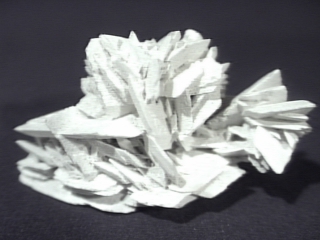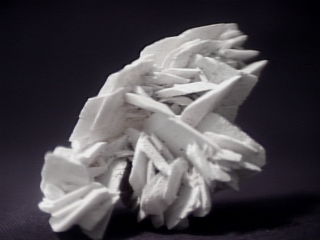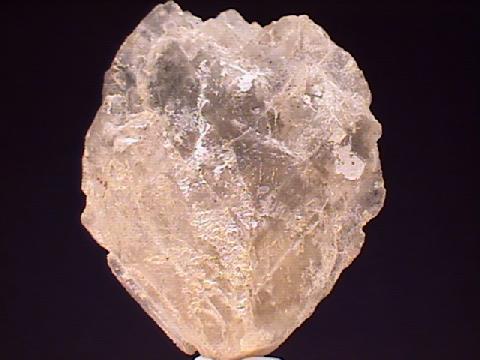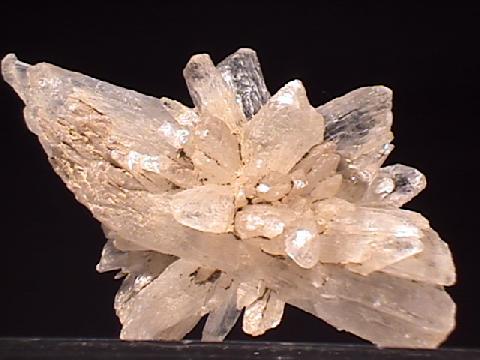 THE MINERAL GLAUBERITE
THE MINERAL GLAUBERITE
- Chemistry: Na2Ca(SO4)2, Sodium Calcium Sulfate
- Class: Sulfates
- Uses: A minor source of "glauber's salt", Na2SO4, and as mineral specimens.
Specimens
A pseudomorph occurs when a mineral is replaced by another mineral at such a slow pace, essentially atom by atom, that no deteriorating effects occur to the shape of the crystal. The pseudomorph (meaning false shape) may look like glauberite's crystals but it is actually another mineral or even opal in one occurrence. Several minerals have been found to replace glauberite such as calcite, quartz, gypsum and as mentioned, opal.
Glauberite also becomes cast by several minerals. It is soluble in water and probably this is the reason for this tendency. After glauberite forms other minerals grow on top of the crystals. Later, the glauberite dissolves away, leaving a cast of itself as the only evidence of its past presence. Its crystal habit is unique enough that both pseudomorphs and casts can usually be identified as being produced from a glauberite crystal. Some quartz and prehnite casts from Paterson, New Jersey were once thought to belong to a strange mystery mineral that no longer exists at the site. But most of these casts are now confidently assigned as glauberite casts.
Glauberite is named for the salt that helps compose its chemistry called "Glauber's salt" after a German chemist. The Na2SO4, is used in dying, solar energy cells and in medicine. Glauberite could be thought of, in very general terms, as a combination of anhydrite, CaSO4, and glauber's salt.
Crystals of glauberite are distinctive and difficult to describe. They are steeply inclined wedge to tabular shaped dipyramidal crystals. Their monoclinic character is easily seen as most symmetry is lacking. However they are usually well-formed and interesting to examine.
Glauberite forms in saline environments with other evaporite minerals such as halite, gypsum, calcite and thenardite. Modern as well as prehistoric evaporite deposits can have glauberite crystals. Some glauberite has been identified in sublimate deposits on lavas off the coast of Sicily. Hydrothermal precipitation of glauberite is also seen.
PHYSICAL CHARACTERISTICS:
- Color is ordinarily white, yellow, gray or colorless.
- Luster is vitreous, greasy to dull.
- Transparency crystals are transparent to translucent.
- Crystal System is monoclinic; 2/m.
- Crystal Habits include the steeply inclined wedge to tabular shaped dipyramidal crystals.
- Cleavage is perfect in one direction (basal).
- Fracture is conchoidal.
- Hardness is 2.5 - 3
- Specific Gravity is approximately 2.7 - 2.8 (average for translucent minerals)
- Streak is white.
- Other Characteristics: Bitter salty taste, striations on most crystal faces and glauberite will dissolve in water but not as readily as halite.
- Associated Minerals are calcite, halite, thenardite, gypsum and certain clays.
- Notable Occurrences include Saline Valley, Inyo Co. and Searles Lake, San Bernardino Co., California, Great Salt Lake, Utah, Texas, New Mexico and Verde Valley, Arizona, USA; Strassfurt, Germany; Russia; Kenya; Chile; Toledo, Spain; Salzburg, Austria; France; Canada; Sicily and India. Pseudomorphs and casts come from many of the previously mentioned localities and from Paterson and Great Notch, New Jersey, USA.
- Best Field Indicators are crystal habit, softness, cleavage, taste, solubility and striations.







